Clipper blades make or break your dog grooming session. The right blade will optimize your cut and make the clipping process fly by. The wrong blade will thwart your attempts at a clean cut. At the very worst, using an inappropriate clipping blade can even injure the dog in your care.
There’s lots to consider before purchasing a new clipper blade. Knowing your options will help you make an informed decision about which clipper blades you need to do your best work. In this post, we break down what you need to consider before buying your next clipper blades.
Choosing the Right Dog Grooming Clippers
Think of your clippers as an investment in your dog grooming kit. A professional model is pricey – but it’s something that you will use every day. Professional-grade clippers are generally designed to fit blades from a variety of brands. Many are snap-on blades, which makes switching the blade a hassle-free process.
The jury is out on whether using the same brand as your clipper model enhances blade performance, but it’s something to consider.
Steel vs. Ceramic Blades
Stainless steel clipper blades are generally the industry norm. While they tend to stay cooler for longer, ceramic blades are much easier to break. Clipping blades are also available in different coatings meant to enhance their function. Silver is antimicrobial. Therefore, a blade coated with silver will target bacteria and fungi.
Clipper blades also come coated with titanium, chrome and carbon. Each touts its own benefits, but doing your research will help you find the best blade for your needs.

Blade Types
- Finishing blade: Finishing blades (also known as fine tooth blades) provide a smooth clip. They are most suitable for an all-over groom or as a finishing touch.
- Skip tooth blade: Just like the name suggests, every other tooth on a skip tooth comb is omitted. These blades are more suitable for a rough cut or for dematting and blending. Be forewarned: skin can get caught in the gaps between the teeth. So be careful with skip tooth blades!
- Wide blade: These blades are simply wider than regular blades – which can come in handy if you are grooming a larger dog. However, they may not fit on your standard clipper.
Blade Sizes and Cuts
Your choice of blade will depend on the length of the cut. Factors such as coat texture and lay of coat will be things you also have to keep in mind as your select the most appropriate blade. Thankfully, the selection process is quite simple. Blades are numbered to indicate what length of hair they will leave. For example, a #10 blade will leave a hair length of 1/16″.
The higher the blade number, the shorter the cut will be. So you should be able to tell that a #15 blade will provide a shorter cut than a #5. Generally manufacturers will indicate the precise length a blade creates in the specifications for the product. Dogs come in a variety of different coat types and textures – which means that a groomer will have to be well-equipped with a selection of blade sizes.
Most blade sizes above the #40 range are used by veterinarians for surgical prep and are rarely used by professional dog groomers.
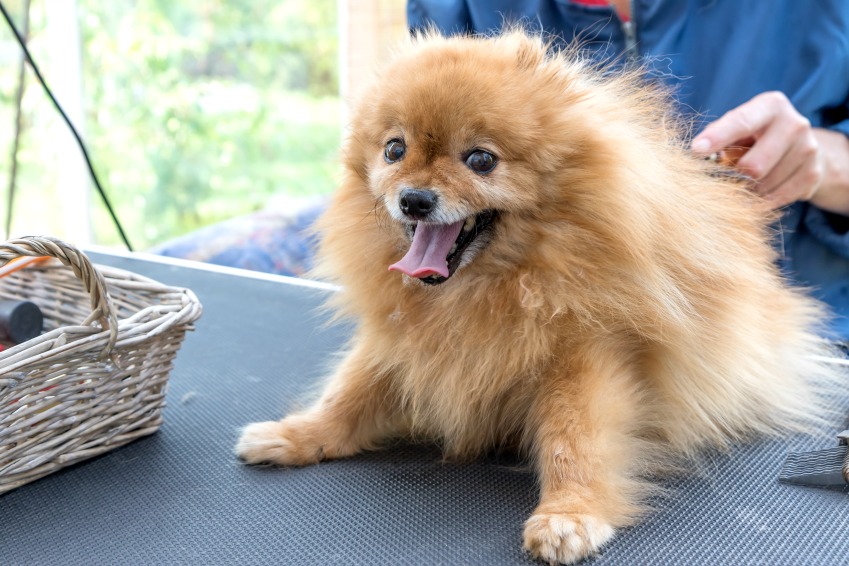
Top Blades for New Dog Groomers
Choosing a blade number will depend on what coat length you aim to achieve – which will also depend on what dog breed you will be working on. Different brands will have length charts. However, here are a few blade sizes that may come in handy for common cuts:
- #10 blade is a good choice for sanitary prep
- #5 or #7 blades work well on mats
- #15 blade is generally suitable for pads
- #7 blade may be best for body work
5-in-1 Blades
At first, the 5-in-1 blade may sound like the most fitting solution. After all, what pet groomer wouldn’t like the convenience of working with an adjustable blade? A 5-in-blade will adjust to 5 different pre-set blade sizes. However, a 5-in-1 blade also poses its own problems.
Although generally it will not heat up as quickly as a regular blade, a 5-in-1 blade does require extra maintenance. It can be difficult to find a professional sharpener that will actually sharpen the finicky blades of a 5-in-1. Not to mention the adjustable design also traps more hair and debris – making the blade cleaning a delicate undertaking. Last but not least, a 5-in-1 blade is only compatible with a specialized model of clipper since the blades cannot simply be snapped on.
Sharpening Blades
A sharp blade will deliver the cleanest cut. Therefore, having your clipping blades sharpened should be a part of your regular blade maintenance. However, this is NOT something that you should attempt to do on your own.
For your own safety AND to keep the integrity of the blade you should leave the sharpening to a professional. Professional knife sharpers may be an option if you can’t find anyone who specializes in clipper blades.
Blade Maintenance
Regular maintenance will extend the longevity of your clipping blades. Here’s what you’ll need:
- Lubricant
- Cooling spray
- Blade cleaner
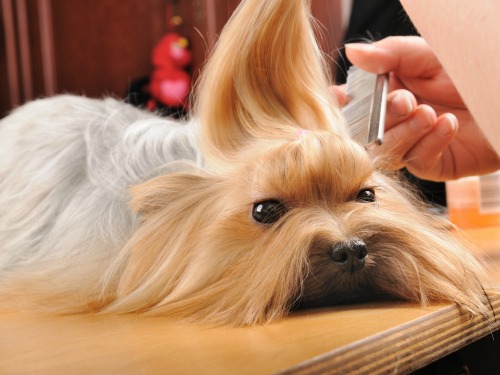
Oiling the Blade
Oil your blade at the end of each day to make sure the blade stays smooth and in good working condition. Apply a few drops of oil onto the two cutting guides of your clipper and on each side of the clipping blade. Make sure the clipper is running to ensure that oil is adequately distributed across cutting surfaces. Use a dry clipper brush (or a toothbrush) to brush off any excess oil.
Also make sure to use an oil that is specifically formulated for clipper blades. It should be easy to find; most companies that sell dog grooming equipment will also sell an appropriate oil.
Cleaning the Blade
How often you clean your blades will depend on frequency of use. A blade that is used regularly will need to be cleaned at least once a week. A clipper blade that is visibly dirty should be thoroughly cleaned before being used again.
To clean your clipping blade, submerge the blade end of clippers into a bowl of blade cleaning solution. You’ll need your clippers running. Keep them submerged for 5-8 seconds. Make sure to wipe the clipper blade dry after.
Using Cooling Spray
If your blades heats up in the middle of use, you should switch blades. Alternatively, you can apply an aerosol cooling spray to the blade. Spray it onto the blade as it is running. An audible RPM change indicates the clipping blade is working more efficiently. Be sure to wipe the blade clean of coolant if you are working in between canine clients.
Clipper blades may sound complicated, but choosing the rights ones should be a straightforward process. The great thing is that many are designed to optimize the grooming process!
Clippers aren’t your only tool. Find out how to use the brushes, combs, and dematting tools in your dog grooming kit!
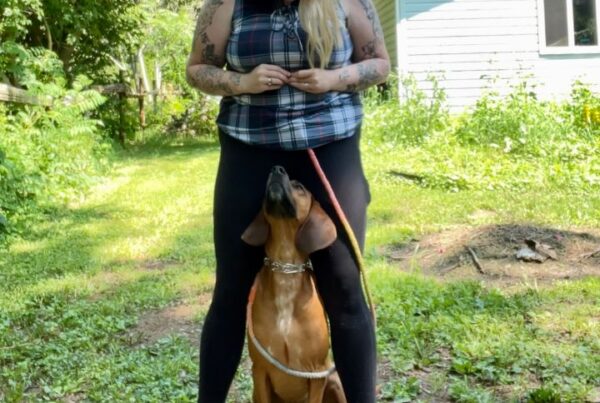

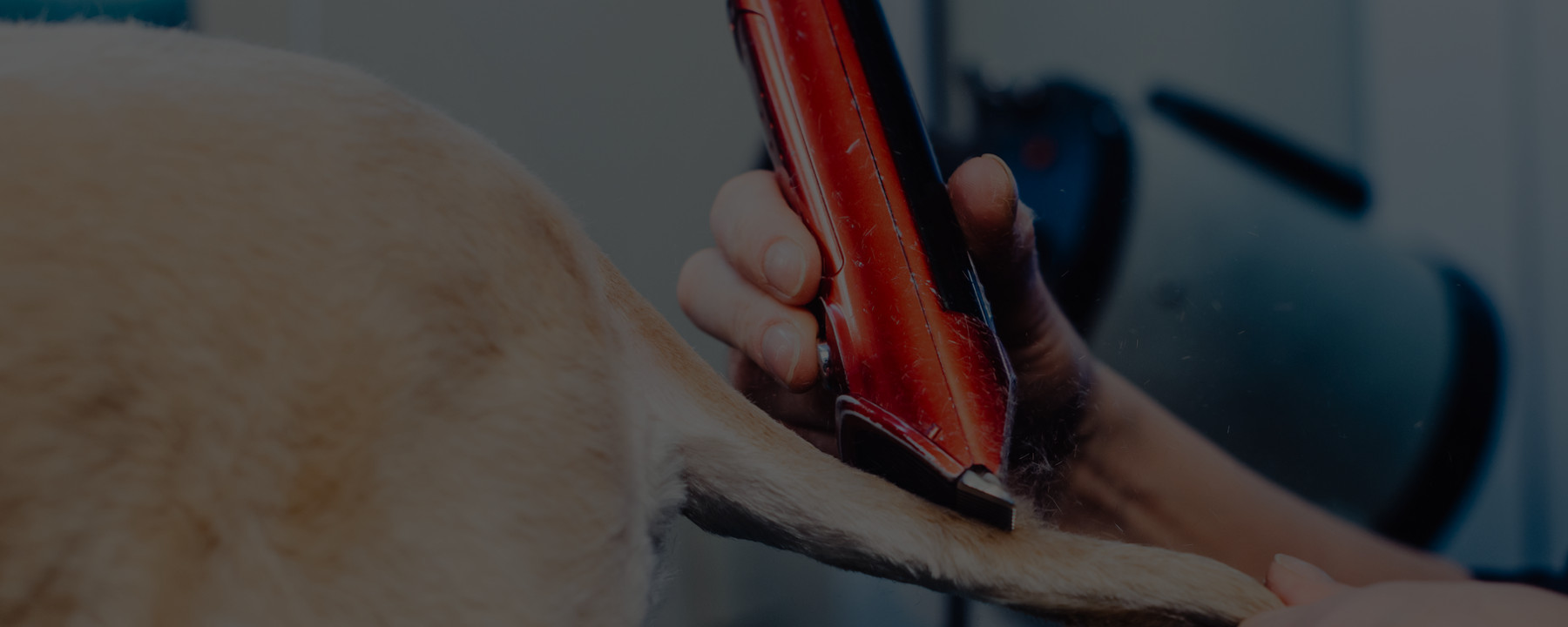

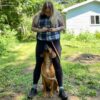



Really helpful…….I was a groomer 40 years ago, techniques and info like this weren’t easy to find. Kudos and thanks.
What is the difference between grooming with vs against the hair grain?
Hi, Annie, great question! When you’re grooming WITH the hair grain, you’re grooming (say, for example, brushing) in the natural direction that the hair is growing in. So, if the hair is growing in a downward direction and you’re brushing with downward strokes, you’d be brushing with the hair grain. When you groom AGAINST the grain, you’re using your tool in the opposite direction of how the hair is naturally growing. So, for example, if the dog’s hair is growing in a downward direction and you were to use your clippers in an UPWARD motion, you’d be clipping against the hair grain. 🙂
All the best,
The QC Team